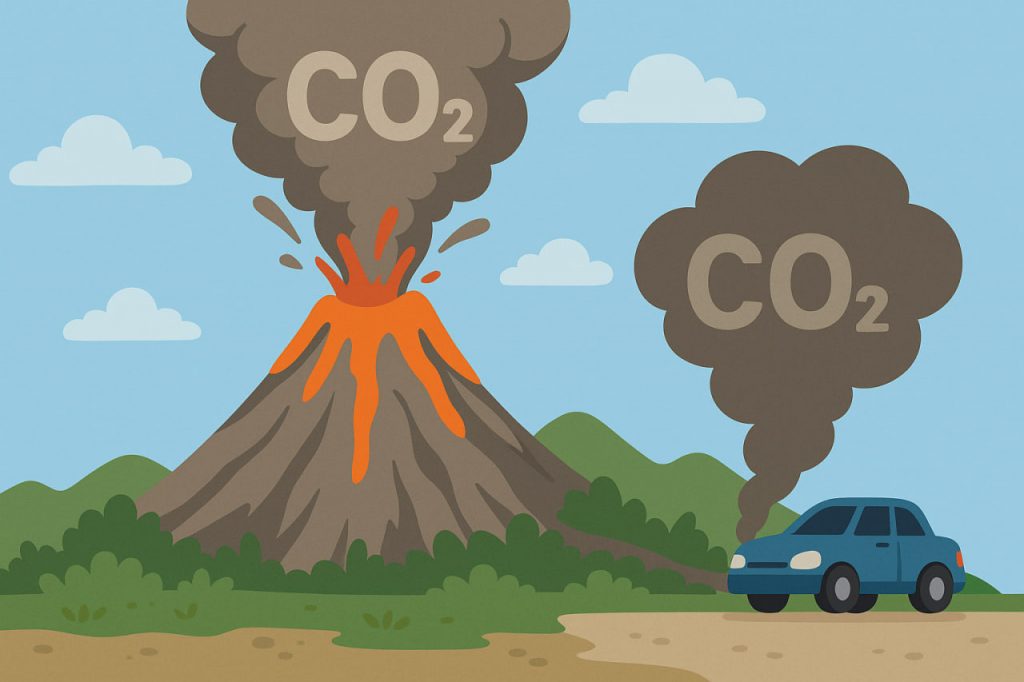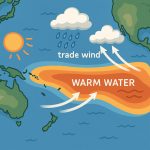Volcanoes are among Earth’s most dramatic natural features, capable of shaping continents and influencing climate. One of the substances released during volcanic eruptions and from active volcanic vents is carbon dioxide (CO₂). As concern over climate change grows, many people ask: how much CO₂ do volcanoes emit globally, and how does this compare to human activity?
Sources of Volcanic CO₂ Emissions
Volcanoes release CO₂ from magma, which contains dissolved gases. As magma rises toward the surface, pressure drops, allowing gases to escape into the atmosphere. Emissions occur not only during eruptions but also through diffuse degassing—a steady release of gases from fumaroles, hydrothermal vents, and even volcanic lakes.
These emissions happen both on land and on the ocean floor. Submarine volcanoes, though harder to monitor, contribute significantly to the total output. However, their CO₂ often dissolves in seawater before reaching the atmosphere.
Global Estimates of Volcanic CO₂ Emissions
Scientists estimate that all volcanoes on Earth release approximately 180 to 440 million metric tons of CO₂ per year. This includes both eruptive and non-eruptive emissions. The wide range in estimates is due to measurement challenges, especially from remote or underwater volcanoes.
Do Volcanoes Affect the Climate?
While volcanoes are minor contributors to long-term CO₂ levels, they can cause short-term climate effects. Some eruptions release vast amounts of sulfur dioxide (SO₂), which forms aerosols in the atmosphere that reflect sunlight and temporarily cool the planet. For example, the eruption of Mount Pinatubo in 1991 led to a global temperature drop of about 0.5°C for over a year.
However, these cooling effects are not due to CO₂. Volcanic carbon dioxide contributes to the greenhouse effect, but the quantities are too small to drive current global warming trends.
Comparison with Human Activity
Human emissions of CO₂ are not only much greater than volcanic emissions—they are also continuous and rising. While a large volcanic eruption may release a few million tons of CO₂ in days or weeks, industrial societies release the equivalent every few hours.
Moreover, volcanic CO₂ emissions are natural and balanced over geological timescales by carbon sinks, such as rock weathering and ocean absorption. In contrast, human activity has disrupted this balance by rapidly adding carbon faster than Earth can absorb it.
Why the Myth Persists
Some climate change skeptics claim volcanoes emit more CO₂ than humans. This claim has been thoroughly debunked by peer-reviewed studies and real-time satellite measurements. The confusion often arises from misunderstanding the difference between geological carbon flux and anthropogenic emissions, or from misrepresenting short-term eruption events as continuous sources.
Accurate monitoring by organizations like the Global Volcanism Program and NASA helps clarify the true role of volcanoes in the carbon cycle.
Conclusion
While volcanoes do release CO₂, their contribution is not that big compared to human activity. But in addition to CO2, they emit many other gases that have a much greater impact on the climate.
Glossary
- Carbon dioxide (CO₂) — a greenhouse gas released by volcanoes and human activities; a key driver of global warming.
- Eruption — the explosive or effusive release of magma, gases, and ash from a volcano.
- Fumarole — an opening in Earth’s crust that emits steam and volcanic gases.
- Submarine volcano — a volcano located beneath the ocean surface.
- Anthropogenic — caused or influenced by human activity.
- Aerosols — tiny particles in the atmosphere that reflect sunlight and affect climate.
- Greenhouse effect — the trapping of heat in Earth’s atmosphere by greenhouse gases like CO₂.
- Carbon sink — natural systems, such as forests and oceans, that absorb more carbon than they release.


